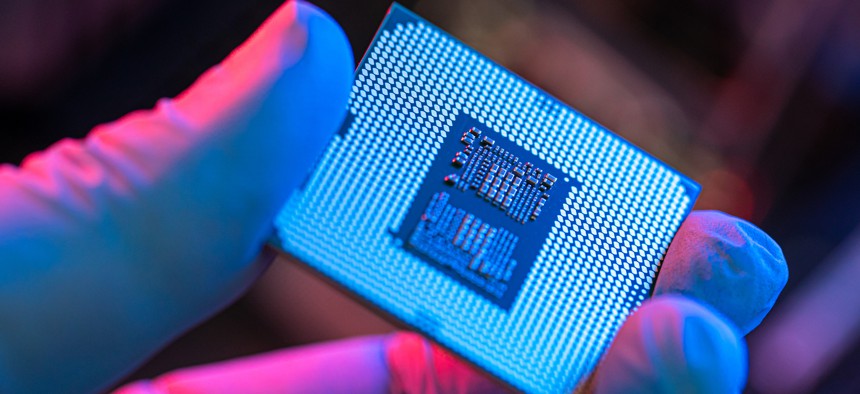Feds to Hand Out $39B to Chip Makers in Workforce Development Subsidies

mailsonpignata / 500px via Getty Images
To access the funding, companies will not only need to show how they plan to train and recruit workers, but also how they will provide child care.
The Commerce Department announced Monday that it will require companies seeking the $39 billion in subsidies in the CHIPS and Science Act to come up with a plan to train and recruit enough workers to design and build chips.
“We are in an incredibly tight labor market,” Commerce Secretary Gina Raimondo said during a call with reporters yesterday. “Labor is hard to find and we have a serious workforce goal that we just have to meet in order to be successful here.”
Raimondo said the department will release a notice of funding opportunity today for the initiative, called CHIPS for America, beginning the months-long process of distributing the subsidies.
Companies seeking funding will be required to provide a detailed assessment of workforce needs in places where they would build the chips and detailed plans for recruiting, training and retaining workers.
In addition, the notice will require that companies seeking more than $150 million in subsidies lay out a plan for how they will provide affordable and accessible child care for their workers.
“This is a math problem,” Raimondo said. “We need more people in the labor force. We have a lack of affordable child care, which is the single most significant factor keeping people, especially women, out of the labor force.”
In signing the bipartisan law in August, President Joe Biden vowed to restore the U.S. as a leader in the production of semiconductors, which are used in everything from dishwashers to automobiles. The U.S. was producing nearly 40% of the world’s supply of chips in 1990; today, it is only creating 12%.
With the subsidies to encourage more semiconductors to be built in the U.S., a Commerce Department official said during the call that the administration is hoping to create at least two large-scale clusters in the country where the chips will be fabricated, assembled and packaged, as well as an undetermined number of smaller facilities.
And to restore the U.S. as a leader in the construction of the chips, Raimondo said the administration has set a goal over the next decade of tripling the number of Ph.D. students in the development of cutting-edge semiconductors. training another 100,00 semiconductor technicians and hiring enough workers to build the chips.
In assessing the funding requests, the department said it will consider such factors as whether the companies are committed to investing in research and development of semiconductors in the U.S.; are creating opportunities for minority-owned, veteran-owned, women-owned, and small businesses; are demonstrating environmental responsibility; and are investing in their community.
“Companies are going to have to show us why the project wouldn't be possible without government investments,” Raimondo said.
While the department will not be requiring construction workers to be unionized, it will strongly encourage them or some sort of worker protections. Although those promising to enter into bargaining agreements will have to lay out how they will prevent work stoppages and keep the construction of the chips on schedule.
In announcing the funding opportunity, Raimondo said the department will be emphasizing protecting national security through such measures as barring the subsidies from going to companies operated by other countries.
The subsidies are the first step toward sending out funding from the $52.7 billion measure. The department said it plans to announce additional funding for semiconductor materials and manufacturing equipment facilities later this spring and for research and development facilities in the fall.
Kery Murakami is a senior reporter for Route Fifty.
NEXT STORY: Legislative Staffs Are Pushing to Unionize






